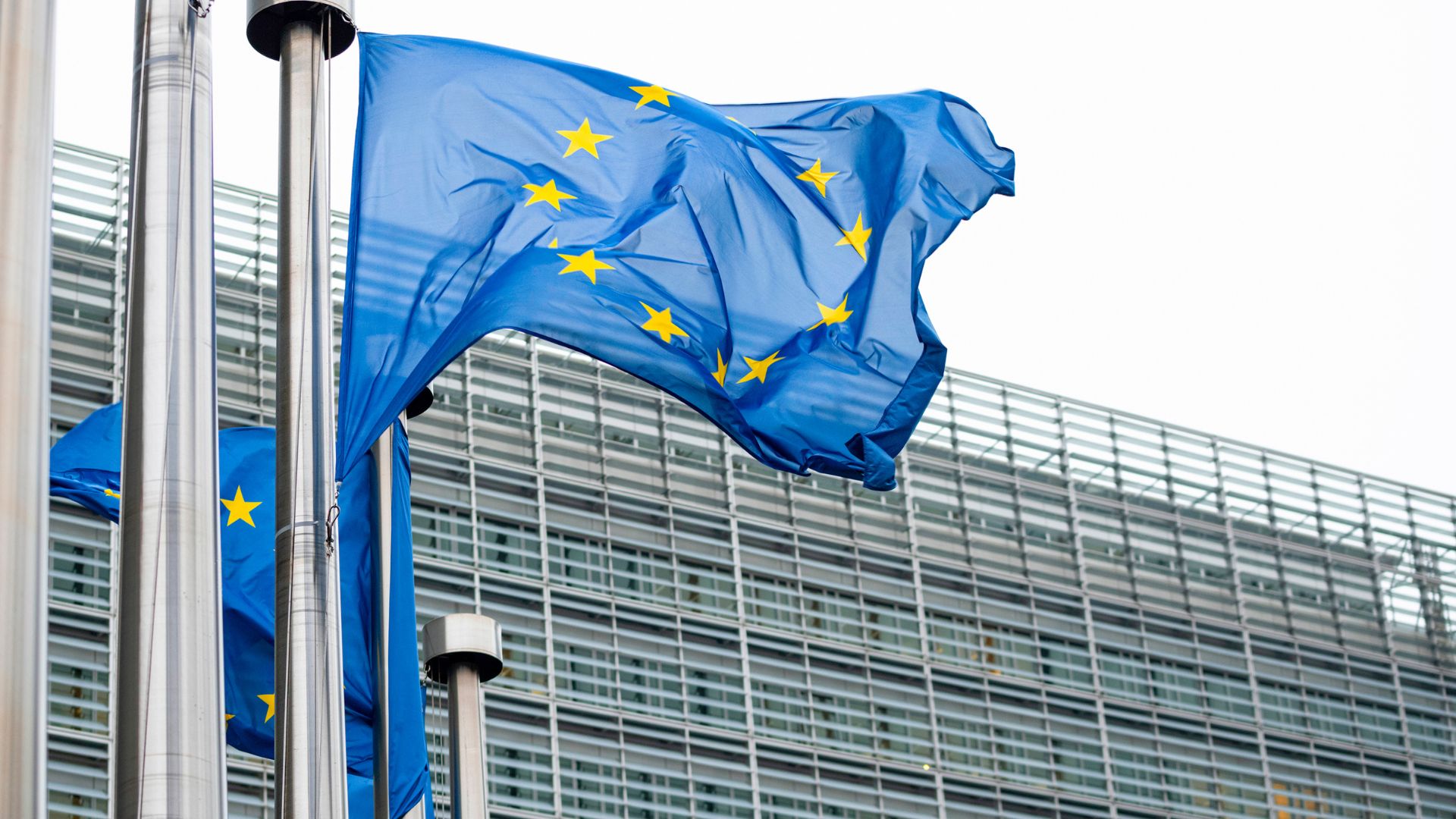The revision of EU chemicals regulation, which had somewhat slowed down in the last years, has recently gained new momentum in the context of the European Commission’s efforts to simplify the regulatory burden upon businesses (the so-called Omnibus Package) and the shift towards strategic resilience and defense readiness. In its so-called Defense Readiness Omnibus, a set of legislative proposals dating from June 2025, aiming at amending the current EU regulatory environment – adopted in peacetime – to simplify processes and remove regulatory and administrative burdens to accelerate the ramp-up of European defense industrial production (see the overview here), the Commission, inter alia, suggests broader exemption possibilities under EU chemicals regulation. In July 2025, the Commission followed up with a more general European Chemicals Industry Action Plan, with the goal of boosting competitiveness while still supporting the green transition and ensuring resilience (see the overview here). These developments provide an opportunity to shine a spotlight on the core principles of EU chemicals regulation, which need to be observed also by non-EU actors exporting into the EU to ensure marketability of their products, and what simplifications the Commission is proposing.
What are the core principles of EU Chemicals Regulation?
EU chemicals regulation provides for a comprehensive and quite sophisticated framework which in principle covers all substances, irrespective of their individual characteristics or hazards (although the specific requirements will vary accordingly). The three pillars of chemicals regulation in the EU are the REACH, CLP and Biocidal Products Regulations.
While the specific duties under EU chemicals regulation are – with a few exceptions – borne only by persons and entities established within the EU (or, more specifically, the European Economic Area, encompassing the EU as well as Iceland, Norway and Liechtenstein), product compliance is important also for non-EU actors exporting substances or products into the EU, to ensure their goods can be marketed within the European Single Market.
REACH Regulation
The REACH Regulation (Regulation (EC) No 1907/2006) is the centerpiece of the regulatory environment at the EU level. It includes the following main obligations for manufacturers, importers, distributors and downstream users, as applicable:
- Registration: Manufacturers and importers of substances in quantities of one tonne or more per year must register this substance by filing a registration dossier to the European Chemicals Agency (ECHA) or, if the same substance has already been registered by other parties, joining the existing consortium (as every substance shall only be registered once). For the registration dossier, registrants must generate substantial information on the relevant substance and, inter alia, its hazard characteristics, and keep it updated. This evaluation requirement may result in material costs.
- Authorization: For certain substances of very high concern (SVHC) included in an annex to REACH (which is regularly being updated), an authorization is required for the placing on the market or use by manufacturers, importers and downstream users, which is subject to a complex application procedure. An authorization held by an upstream supplier also covers the uses further down the supply chain of the specific substance for which the authorization has been granted.
- Restriction: Apart from the authorization requirement, tailormade restrictions may apply to specific substances as included in an annex to REACH (which is also regularly being updated), reaching from certain safety measures for substance handling to near-total bans. For example, a far-reaching ban of the whole group of per- and polyfluoroalkyl substances (PFAS), the so-called universal PFAS restriction, is currently in the evaluation procedure (although it is unclear at the time whether it will eventually be adopted on such a broad scale).
A separate legislative act, the POP Regulation (Regulation (EU) No 2019/1021) also provides for specific restrictions for so-called persistent organic pollutants, implementing the international Stockholm Convention. Usually, a substance will often first be subjected to restrictions under REACH and, once it has been placed on the restriction list of the Stockholm Convention, will be moved to the POP Regulation at the EU level.
- Information and notification: REACH also requires the provision of information along the supply chain, mainly via safety data sheets, as well as notification to ECHA and, upon request, information for consumers on SVHC present in articles above a certain threshold (0.1% weight by weight).
CLP Regulation
The CLP Regulation (Regulation (EC) No 1272/2008) is intertwined with REACH and aims at ensuring consistent hazard communication in line with the Globally Harmonized System of Classification and Labeling of Chemicals (GHS). To this end, manufacturers, importers and downstream users must classify substances or mixtures into specified hazard classes before placing them on the market, and label and package substances classified as hazardous in line with the applicable requirements. The CLP Regulation also provides the possibility of a harmonized classification, which will then be included in an annex to CLP.
The CLP Regulation also provides for notification, in particular for manufacturers and importers to notify the substances they place on the market to ECHA to be included in the so-called classification and labeling inventory (C&L Inventory).
Biocidal Products Regulation
The Biocidal Products Regulation (Regulation (EU) No 528/2012), or BPR, does not apply to all substances (unlike REACH and CLP), but only to biocidal products, being – broadly speaking – substances or mixtures containing one or more active substances aiming at, inter alia, destroying or deterring harmful organisms (other than by mere physical or mechanical action), which includes, e.g., disinfectants, hand sanitizers, insecticides, rat poison or preservatives for materials (but not medicines, which are subject to distinct regulation), as well as to articles treated with biocidal products.
BPR mainly requires the authorization of a biocidal product before it may be made available on the market, which in turn requires the prior approval of the active substances contained therein. Beyond that, authorization holders must, inter alia, ensure proper classification, packaging and labeling of biocidal products.
What simplifications of chemicals regulation does the Defense Readiness Omnibus include?
As part of the Defense Readiness Omnibus package, the Commission proposes amendments to the REACH, CLP, POP and Biocidal Products Regulations to provide additional leeway for EU Member States in reducing regulatory constraints for defense projects. The actual amendments to the legal texts are relatively minor but may have a considerable impact on products and businesses that (also) serve defense interests.
The centerpiece of the Defense Readiness Omnibus is the amendment of the scope of application of REACH as a whole. The initial wording already included the possibility for EU Member States to exempt certain substances from REACH “in specific cases”, where necessary in the interests of defense. However, this provision has been interpreted narrowly and applied inconsistently across Member States (presumably out of caution to avoid a violation of the binding regulation). To fulfil the defense industry’s needs to develop, produce and maintain defense material, the Commission proposes to delete the reference to “specific cases”, resulting in the following wording:
“Member States may allow for exemptions from this Regulation for substances, on their own, in a mixture or in an article, where necessary in the interests of defence.”
The revision shall also be mirrored in the corresponding provisions of the CLP Regulation and the Biocidal Products Regulation. Thus, Member States shall be enabled to exempt substances from virtually all requirements of EU chemicals regulation, if they deem it necessary in the interests of defense.
These changes, while relatively small per se, need to be considered in conjunction with their written reasoning, along with the broader communications on the Defense Readiness Omnibus: the Commission explicitly encourages EU Member States to make more generous use of the exemption, recognizing that the previous wording did not reflect the operational realities of defense production and maintenance. Therefore, it can be expected that the exemption will step out of its previous shadowy existence and result in potentially substantial easements for substances that are essential for defense purposes (whereas it is not required under the wording that they must be exclusively relevant for defense purposes).
Beyond the three main pillars of EU chemicals regulation, the POP Regulation will also be amended. As this Regulation implements the international Stockholm Convention, there is less leeway to implement simplifications on an EU level. Therefore, the Commission targets the preparatory work preceding the listing of further substances in the Stockholm Convention, by allowing Member States to “duly take into account defence readiness and specificities of the defence sector, including impacts on defence production supply chains” when undertaking risk management evaluations in the course of a review process, and to exempt sensitive defense-related information from reporting obligations to serve national or EU defense interests. Thus, the proposed amendments to the POP Regulation are rather indirect but may potentially result in more reluctance when deciding on new substance restrictions and prohibitions under the Stockholm Convention.
What else is included in the Defense Readiness Omnibus?
The Defense Readiness Omnibus package includes a comprehensive package of legislative proposals, aimed at enhancing the EU’s defense readiness by 2030. These proposals span regulatory simplification, industrial policy, procurement, chemicals regulation, and permitting procedures.
- Beyond chemicals regulation, the package contains, inter alia, the simplification of permitting procedures for defense infrastructure, establishing strict deadlines for project permitting and, as an important novelty, the “deemed approval” of projects where no decision is rendered within applicable deadlines, meaning that if a decision on a permit is not made within 60 days, with the possibility of limited extension, the permit is deemed granted.
- The proposals also concern the European Defense Fund (EDF), aiming to significantly streamline and enhance the EDF’s operational framework to better support the EU’s defense readiness goals, including award criteria for funding. The Commission will also have clearer authority to grant funding without a call for proposals in certain substantiated cases, streamlining urgent or strategic project support.
- The package also includes revisions of EU rules on defense procurement and the intra-EU transfer of defense-related products to simplify procedures, increase flexibility, and accelerate procurement in response to urgent defense needs and promote agile, interoperable, and innovation-friendly investments.
- The Omnibus includes further commitment to remove obstacles related to access to finance, including those stemming from ESG (Environmental, Social, Governance) investment criteria. The Commission acknowledges that the Union’s Sustainable Finance Framework (for example, EU Taxonomy, Sustainable Finance Disclosure Regulation (SFDR), Corporate Sustainability Reporting Directive (CSRD), Green Bond Regulation) does not prohibit defense financing but recognizes the need for clarification. Therefore, the Commission commits to providing additional guidance and adjustment proposals during the SFDR review to clarify how defense investments align with the EU sustainability framework.
What further measures are planned in the Chemicals Action Plan?
In the Chemicals Action Plan, which was published a few weeks after the Defense Readiness Omnibus on July 8, 2025, the Commission addresses key challenges, namely high energy costs, unfair global competition, and weak demand, while promoting investment in innovation and sustainability. The Plan explicitly references the Defense Readiness Omnibus in the context of broader regulatory reforms. It is accompanied by a further simplification omnibus for chemicals (the Chemicals Omnibus), which includes certain revisions to the CLP Regulation (along with the more specific Cosmetic Product and Fertilizing Product Regulations), whereas notably the REACH Regulation is not yet included at this stage.
- The proposed simplifications of the CLP Regulation mainly pertain to providing more flexibility regarding labeling requirements, as well as advertising rules. These shall result in a total of €363 million in annual savings for the industry (together with the simplification of the Cosmetic Product and Fertilizing Product Regulations).
- The Plan also references the revision of the REACH Regulation, which has been planned for multiple years, but had proved quite complex and ultimately entered a hiatus in the run-up to the elections to the European Parliament in June 2024. The Commission now commits to adopt a respective proposal for a targeted revision by the end of 2025 to simplify the rules and speed up the procedures for industry. This may indicate that the Commission might abandon some of its earlier plans to implement possibilities to quickly introduce broader substance restrictions (namely, on the basis of a so-called generic risk approach). The publication of the concrete proposal will be an important milestone for the direction of the further development of EU chemicals regulation.
Any news on PFAS?
The Chemicals Action Plan also mentions the universal PFAS restriction, which was proposed by five Member States in January 2023 after long preparations and has since been under evaluation by ECHA and its committees. The proposed restriction basically provides for a general ban on the whole substance group of PFAS (subject to specific exemptions).
The Commission has now clarified that the scientific assessment by ECHA is scheduled to conclude in 2026, and that the Commission wants to present a proposal as soon as possible after receiving ECHA’s opinion with the overall objective of minimizing PFAS emissions.
- In the Plan, the Commission announces that it will consider a PFAS ban in consumer uses such as cosmetics, food contact materials and outdoor clothing.
- In industrial applications, the continued use of PFAS may be allowed for critical applications such as health, defense, semiconductors and other strategic sectors (so-called essential use), where no adequate alternatives are available in terms of performance and safety, under strict conditions until acceptable substitutes are found.
- Thus, while the Commission does not target a total ban, it seems to still be committed to pursue a rather strict overall approach.
The Commission also plans to support the transition away from PFAS with a comprehensive strategy combining regulation with other measures such as targeted investment and enhanced coordination.
There shall be decisive efforts to clean up sites already strongly polluted by PFAS, based on the polluter pays principle. Furthermore, a new EU-wide PFAS monitoring framework shall be established.
The Plan shows that – as was to be expected – the regulatory pressure on PFAS will not cease but intensify within the coming years.

For further information, please contact:
Prof. Dr. Markus Appel, Partner, Linklaters
markus.appel@linklaters.com





